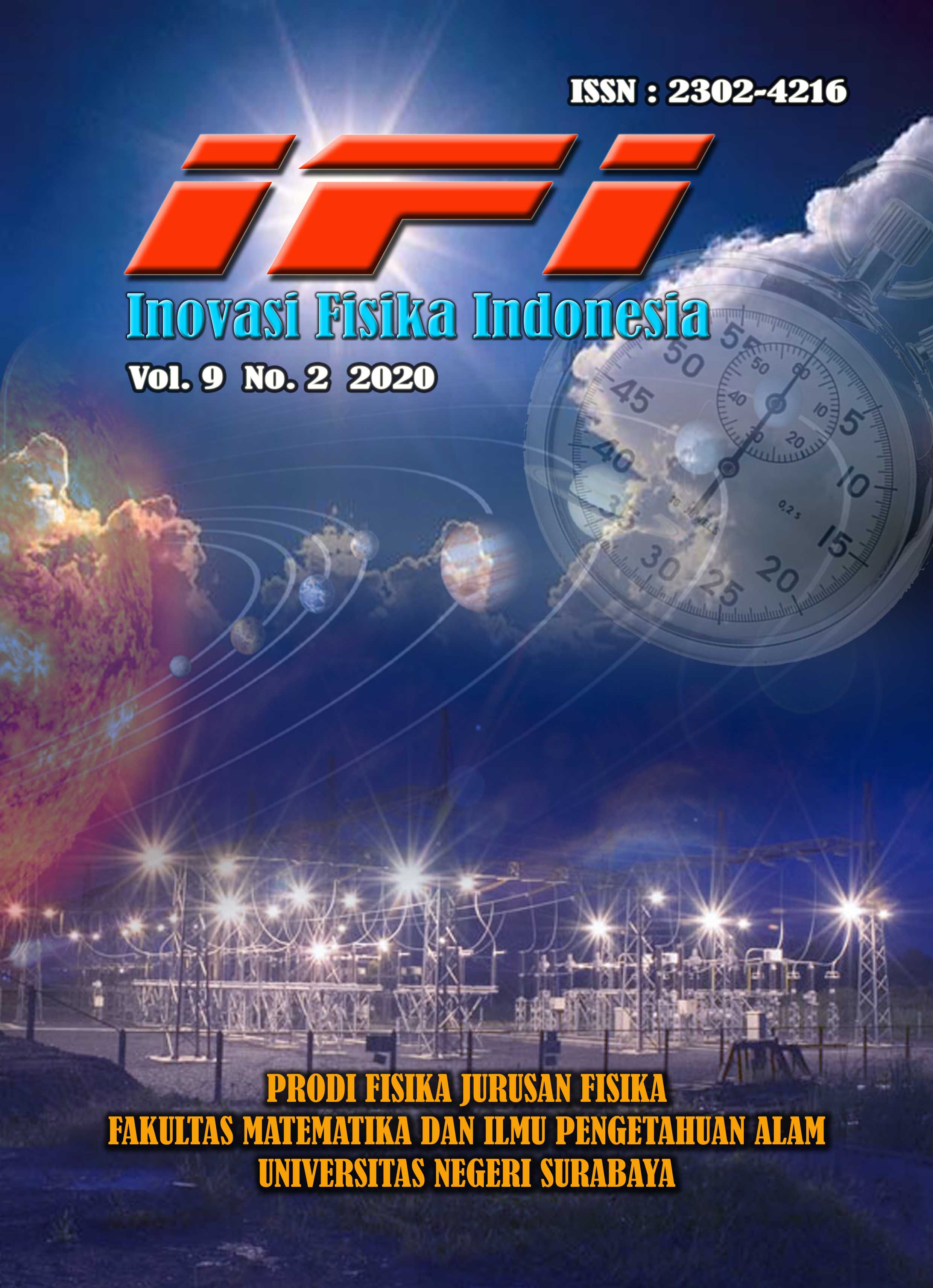FABRIKASI KERAMIK (Mg0,6Zn0,4)TiO3+x wt.% Bi2O3 HASIL SINTESIS DENGAN METODE PENCAMPURAN LARUTAN DAN PENGARUH VARIASI x wt.% Bi2O3 TERHADAP STRUKTUR DAN DENSITAS KERAMIK
DOI:
https://doi.org/10.26740/ifi.v9n2.p15-20Downloads
Download data is not yet available.
Downloads
Published
2020-06-01
How to Cite
Nisa’, D., & Ermawati, F. U. (2020). FABRIKASI KERAMIK (Mg0,6Zn0,4)TiO3+x wt.% Bi2O3 HASIL SINTESIS DENGAN METODE PENCAMPURAN LARUTAN DAN PENGARUH VARIASI x wt.% Bi2O3 TERHADAP STRUKTUR DAN DENSITAS KERAMIK. Inovasi Fisika Indonesia, 9(2), 15–20. https://doi.org/10.26740/ifi.v9n2.p15-20
Issue
Section
Articles
 Abstract views: 216
,
Abstract views: 216
, PDF Downloads: 228
PDF Downloads: 228








1.png)
